ESSA-7
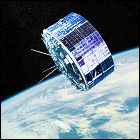 The recently-rechristened Environmental Sciences Service Administration launches, with the help of NASA, ESSA-7, the latest in a constellation of weather satellites operated by the former U.S. Weather Bureau. Like many of the other ESSA satellites, technical problems plague ESSA-7, and its camera system fails within a year. Engineering tests are carried out with ESSA-7 after it goes blind until the satellite is shut down early in 1970.
The recently-rechristened Environmental Sciences Service Administration launches, with the help of NASA, ESSA-7, the latest in a constellation of weather satellites operated by the former U.S. Weather Bureau. Like many of the other ESSA satellites, technical problems plague ESSA-7, and its camera system fails within a year. Engineering tests are carried out with ESSA-7 after it goes blind until the satellite is shut down early in 1970.
ESSA-6
 The recently-rechristened Environmental Sciences Service Administration launches, with the help of NASA, ESSA-6, the latest in a constellation of weather satellites operated by the former U.S. Weather Bureau. ESSA-6 remains in service until late 1969.
The recently-rechristened Environmental Sciences Service Administration launches, with the help of NASA, ESSA-6, the latest in a constellation of weather satellites operated by the former U.S. Weather Bureau. ESSA-6 remains in service until late 1969.
ATS-3
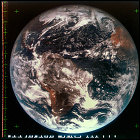 NASA launches Applications Technology Satellite-3, bundling new technology demonstrations onto a new weather satellite in geosynchronous orbit. Offering the first color view of Earth from that orbit, ATS-3 also relays weather data to specially equipped ground stations. It remains in service through 1975. This is the second ATS satellite to have a successful outcome, with ATS-2, ATS-4 and ATS-5 all faling victim to various kinds of launch failures.
NASA launches Applications Technology Satellite-3, bundling new technology demonstrations onto a new weather satellite in geosynchronous orbit. Offering the first color view of Earth from that orbit, ATS-3 also relays weather data to specially equipped ground stations. It remains in service through 1975. This is the second ATS satellite to have a successful outcome, with ATS-2, ATS-4 and ATS-5 all faling victim to various kinds of launch failures.
Our World: we now go live to…
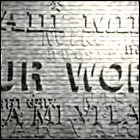 An international production caried out live via satellite on a scale previously unimagined, Our World chronicles the activities of several countries in an all-star, real time TV broadcast to 26 countries, with segments aired live from Canada, the United States, Britain, Japan and Australia – the producers, based at the BBC, forbid pre-taped segments. Celebrity guests taking part in the live broadcast include painter Pablo Picasso, Marshall McLuhan, and the Beatles (performing “All You Need Is Love”); events seen happening live include the construction of a Saturn V rocket at Kennedy Space Center and the construction of the Japanese subway system. As laid out in the planning documents for the broadcast, which took nearly a year to prepare for, no heads of state or political figures are permitted to appear; the Soviet Union, East Germany, Czechoslovakia, Hungary and Poland abruptly end their participation just four days before the airdate, protesting the west’s stance on the Six Day War in the Middle East. An estimated 400 million people watch worldwide – the largest audience of any single television broadcast to date.
An international production caried out live via satellite on a scale previously unimagined, Our World chronicles the activities of several countries in an all-star, real time TV broadcast to 26 countries, with segments aired live from Canada, the United States, Britain, Japan and Australia – the producers, based at the BBC, forbid pre-taped segments. Celebrity guests taking part in the live broadcast include painter Pablo Picasso, Marshall McLuhan, and the Beatles (performing “All You Need Is Love”); events seen happening live include the construction of a Saturn V rocket at Kennedy Space Center and the construction of the Japanese subway system. As laid out in the planning documents for the broadcast, which took nearly a year to prepare for, no heads of state or political figures are permitted to appear; the Soviet Union, East Germany, Czechoslovakia, Hungary and Poland abruptly end their participation just four days before the airdate, protesting the west’s stance on the Six Day War in the Middle East. An estimated 400 million people watch worldwide – the largest audience of any single television broadcast to date.
Test No. 6
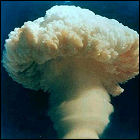 The People’s Republic of China conducts a nuclear weapons test under the nondescript code name Test No. 6, which is in fact China’s first thermonuclear (hydrogen) bomb test. Dropped by an aircraft, Test No. 6 has a yield of 3.3 megatons. For context, China had conducted its first nuclear test barely three years earlier.
The People’s Republic of China conducts a nuclear weapons test under the nondescript code name Test No. 6, which is in fact China’s first thermonuclear (hydrogen) bomb test. Dropped by an aircraft, Test No. 6 has a yield of 3.3 megatons. For context, China had conducted its first nuclear test barely three years earlier.
ESSA-5
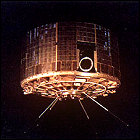 The recently-rechristened Environmental Sciences Service Administration launches, with the help of NASA, ESSA-5, the latest in a constellation of weather satellites operated by the former U.S. Weather Bureau. Though suffering from a few technical glitches and system failures, ESSA-5 remains in service until late 1968.
The recently-rechristened Environmental Sciences Service Administration launches, with the help of NASA, ESSA-5, the latest in a constellation of weather satellites operated by the former U.S. Weather Bureau. Though suffering from a few technical glitches and system failures, ESSA-5 remains in service until late 1968.
Weather Radio expands
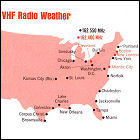 The U.S. Weather Bureau announces plans to expand its Weather Radio service across the country, with forecasts now prepared and worded for public consumption (as opposed to the service’s original 1950s mission of providing weather information for airline pilots). Concentrated primarily in coastal areas and a handful of inland population centers, the Weather Radio network has yet to become the Bureau’s primary means of disseminating emergency weather information, a mission it won’t take on until the 1970s.
The U.S. Weather Bureau announces plans to expand its Weather Radio service across the country, with forecasts now prepared and worded for public consumption (as opposed to the service’s original 1950s mission of providing weather information for airline pilots). Concentrated primarily in coastal areas and a handful of inland population centers, the Weather Radio network has yet to become the Bureau’s primary means of disseminating emergency weather information, a mission it won’t take on until the 1970s.
ESSA-4
 The recently-rechristened Environmental Sciences Service Administration launches, with the help of NASA, ESSA-4, the latest in a constellation of weather satellites operated by the former U.S. Weather Bureau. One of ESSA-4’s cameras fails to activate, and the satellite remains in service for less than one year.
The recently-rechristened Environmental Sciences Service Administration launches, with the help of NASA, ESSA-4, the latest in a constellation of weather satellites operated by the former U.S. Weather Bureau. One of ESSA-4’s cameras fails to activate, and the satellite remains in service for less than one year.
Epimetheus
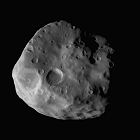 Just days after the discovery of a satellite in a near-identical orbit, U.S. Naval Observatory astronomer Richard Walker discovers Epimetheus, another natural satellite of the planet Saturn, again orbiting just beyond the outer edge of Saturn’s ring. Many of Walker’s fellow astronomers believe this is merely a second sighting of Janus, discovered mere days before, but irregularities in the computed orbits vex astronomers well into the 1970s, at which point it is conceded that the observations are best explained by two satellites in a very close orbit to one another. Epimetheus and Janus will next be spotted by Voyager 1 in 1980, conclusively proving the existence of two bodies. Epimetheus’ name won’t be made official until 1983. (Epimetheus is shown here in a 21st century Cassini photo.)
Just days after the discovery of a satellite in a near-identical orbit, U.S. Naval Observatory astronomer Richard Walker discovers Epimetheus, another natural satellite of the planet Saturn, again orbiting just beyond the outer edge of Saturn’s ring. Many of Walker’s fellow astronomers believe this is merely a second sighting of Janus, discovered mere days before, but irregularities in the computed orbits vex astronomers well into the 1970s, at which point it is conceded that the observations are best explained by two satellites in a very close orbit to one another. Epimetheus and Janus will next be spotted by Voyager 1 in 1980, conclusively proving the existence of two bodies. Epimetheus’ name won’t be made official until 1983. (Epimetheus is shown here in a 21st century Cassini photo.)
Janus
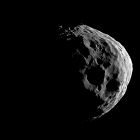 French astronomer Audouin Dollfus discovers Janus, the tenth discovered natural satellite of the planet Saturn, orbiting just beyond the outer edge of Saturn’s ring. Confusion is caused when, mere days later, an American astronomer discovers another body in a near-identical orbit that cannot be reconciled with the orbit calculated for Janus. Only in the late 1970s will a theory emerge that explains the inconsistencies as the presence of two moons moving around Saturn as a co-orbital pair, occasionally swapping positions. Janus’ existence will be verified in 1980 by Voyager 1. (Janus is shown here in a 21st century Cassini photo.)
French astronomer Audouin Dollfus discovers Janus, the tenth discovered natural satellite of the planet Saturn, orbiting just beyond the outer edge of Saturn’s ring. Confusion is caused when, mere days later, an American astronomer discovers another body in a near-identical orbit that cannot be reconciled with the orbit calculated for Janus. Only in the late 1970s will a theory emerge that explains the inconsistencies as the presence of two moons moving around Saturn as a co-orbital pair, occasionally swapping positions. Janus’ existence will be verified in 1980 by Voyager 1. (Janus is shown here in a 21st century Cassini photo.)
ATS-1
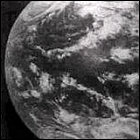 NASA launches Aplications Technology Satellite-1, the first of a new series of experimental satellites with a goal of combining the functions of existing weather and communication satellites, with other technology demonstrations added on. ATS-1 transmits the first-ever view of the entire face of Earth visible from geosynchronous orbit, as well as testing some of the first satellite navigation technology. ATS-1’s position in orbit also proves ideal for the North-America-to-Australia link during 1967’s global Our World broadcast. ATS-1 remains in serice for almost exactly 12 years.
NASA launches Aplications Technology Satellite-1, the first of a new series of experimental satellites with a goal of combining the functions of existing weather and communication satellites, with other technology demonstrations added on. ATS-1 transmits the first-ever view of the entire face of Earth visible from geosynchronous orbit, as well as testing some of the first satellite navigation technology. ATS-1’s position in orbit also proves ideal for the North-America-to-Australia link during 1967’s global Our World broadcast. ATS-1 remains in serice for almost exactly 12 years.
ESSA-3
 The recently-rechristened Environmental Sciences Service Administration (previously the U.S. Weather Bureau) launches, with the help of NASA, weather satellite ESSA-3, the third in a constellation of Earth-observing weather satellites. The timing of the launch is fortunate, as ESSA-3 takes up its station in orbit mere days before the unexpected shutdown of ESSA-1’s camera system. ESSA-3’s own camera system begins to fail in less than a year, and it is deactivated near the end of 1968 due to continued system failures.
The recently-rechristened Environmental Sciences Service Administration (previously the U.S. Weather Bureau) launches, with the help of NASA, weather satellite ESSA-3, the third in a constellation of Earth-observing weather satellites. The timing of the launch is fortunate, as ESSA-3 takes up its station in orbit mere days before the unexpected shutdown of ESSA-1’s camera system. ESSA-3’s own camera system begins to fail in less than a year, and it is deactivated near the end of 1968 due to continued system failures.
Nimbus 2
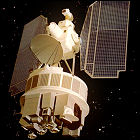 NASA launches the Nimbus 2 satellite, designed to observe weather patterns from orbit and test new weather and climate detection technologies. Nimbus 2’s only means of data storage fails within weeks, and that system’s only backup fails later in the year. Nimbus 2 is shut down in 1969 when the system it uses to maintain orientation to Earth’s horizon also fails.
NASA launches the Nimbus 2 satellite, designed to observe weather patterns from orbit and test new weather and climate detection technologies. Nimbus 2’s only means of data storage fails within weeks, and that system’s only backup fails later in the year. Nimbus 2 is shut down in 1969 when the system it uses to maintain orientation to Earth’s horizon also fails.
Orbiting Astronomical Observatory
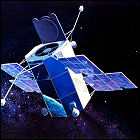 NASA launches its first space-based telescope, the unmanned Orbiting Astronomical Observatory satellite, into Earth orbit. Weighing nearly two tons and sporting visible, ultraviolet, X-ray and gamma ray astronomy capabilities, OAO is in trouble mere minutes after it goes into service: a serious electrical failure leaves the spacecraft in a blind tumble, and it will be declared a loss three days after launch. NASA will attempt another OAO launch in 1968.
NASA launches its first space-based telescope, the unmanned Orbiting Astronomical Observatory satellite, into Earth orbit. Weighing nearly two tons and sporting visible, ultraviolet, X-ray and gamma ray astronomy capabilities, OAO is in trouble mere minutes after it goes into service: a serious electrical failure leaves the spacecraft in a blind tumble, and it will be declared a loss three days after launch. NASA will attempt another OAO launch in 1968.
ESSA-2 launched
 The recently-rechristened Environmental Sciences Service Administration (previously the U.S. Weather Bureau) launches, with the help of NASA, weather satellite ESSA-2, intended to be the second in a constellation of spaceborne observers of Earth’s weather. Virtually identical to ESSA-1, ESSA-2 monitors Earth’s cloud cover for over four years; it is decommissioned in 1970, not because it stops working, but because a newer satellite utilizes the same telemetry frequency.
The recently-rechristened Environmental Sciences Service Administration (previously the U.S. Weather Bureau) launches, with the help of NASA, weather satellite ESSA-2, intended to be the second in a constellation of spaceborne observers of Earth’s weather. Virtually identical to ESSA-1, ESSA-2 monitors Earth’s cloud cover for over four years; it is decommissioned in 1970, not because it stops working, but because a newer satellite utilizes the same telemetry frequency.
ESSA-1: Operational TIROS
 The recently-rechristened Environmental Sciences Service Administration (previously the U.S. Weather Bureau) launches, with the help of NASA, the first “Operational TIROS” weather satellite, ESSA-1. Based on the architecture of the later TIROS satellites, this is intended to be the first fully-operational, long-life weather satellite, in the tradition of many of the long-lived TIROS weather satellites. But eight months into its operational lifetime, ESSA-1’s on board camera system fails, rendering it blind – it becomes useless as a weather satellite and is kept online for engineering experiments until spring 1967.
The recently-rechristened Environmental Sciences Service Administration (previously the U.S. Weather Bureau) launches, with the help of NASA, the first “Operational TIROS” weather satellite, ESSA-1. Based on the architecture of the later TIROS satellites, this is intended to be the first fully-operational, long-life weather satellite, in the tradition of many of the long-lived TIROS weather satellites. But eight months into its operational lifetime, ESSA-1’s on board camera system fails, rendering it blind – it becomes useless as a weather satellite and is kept online for engineering experiments until spring 1967.
ESSA
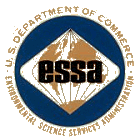 As part of a reorganization of agencies within the U.S. government in 1965, the country’s Weather Bureau becomes part of ESSA, the Environmental Science Services Administration, and is placed under the Department of Commerce. All weather prediction and analysis is now under the jurisdiction of ESSA, including a growing fleet of weather satellites operated jointly by ESSA and NASA. The agency will be renamed the National Oceanic & Atmospheric Administration in 1970.
As part of a reorganization of agencies within the U.S. government in 1965, the country’s Weather Bureau becomes part of ESSA, the Environmental Science Services Administration, and is placed under the Department of Commerce. All weather prediction and analysis is now under the jurisdiction of ESSA, including a growing fleet of weather satellites operated jointly by ESSA and NASA. The agency will be renamed the National Oceanic & Atmospheric Administration in 1970.
TIROS-10
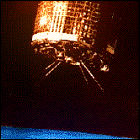 NASA and the United States Weather Bureau launch the tenth and final experimental TIROS weather satellite, TIROS-10. Continuing to test technological upgrades for a fully-functional weather satellite fleet, TIROS-10 also provides additional coverage during hurricane seasons, and remains operational for exactly two years, at which point NASA begins a planned shutdown and phase-out of the experimental TIROS satellites in favor of the Nimbus and ESSA weather satellites.
NASA and the United States Weather Bureau launch the tenth and final experimental TIROS weather satellite, TIROS-10. Continuing to test technological upgrades for a fully-functional weather satellite fleet, TIROS-10 also provides additional coverage during hurricane seasons, and remains operational for exactly two years, at which point NASA begins a planned shutdown and phase-out of the experimental TIROS satellites in favor of the Nimbus and ESSA weather satellites.
Palm Sunday Tornado Outbreak
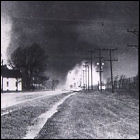 On the 45th anniversary of a similar severe weather event, a major outbreak of violent tornadoes strikes the northern midwest, causing 271 deaths and over a thousand injuries in Wisconsin, Illinois, Indiana, Iowa, Ohio, and Michigan; 137 of the deaths occur in Indiana alone. With weather radar still in its infant state, a radio station in Cedar Rapids spots the first storm on its own radar, while nearby National Weather Service offices do not have radar yet. The U.S. Weather Bureau’s confusing system of “tornado forecasts” and “tornado alerts” is changed to more clearly delineated “watches” and “warnings” after this event.
On the 45th anniversary of a similar severe weather event, a major outbreak of violent tornadoes strikes the northern midwest, causing 271 deaths and over a thousand injuries in Wisconsin, Illinois, Indiana, Iowa, Ohio, and Michigan; 137 of the deaths occur in Indiana alone. With weather radar still in its infant state, a radio station in Cedar Rapids spots the first storm on its own radar, while nearby National Weather Service offices do not have radar yet. The U.S. Weather Bureau’s confusing system of “tornado forecasts” and “tornado alerts” is changed to more clearly delineated “watches” and “warnings” after this event.
Intelsat I: The Early Bird
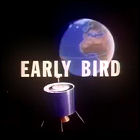 Built for COMSAT (Communications Satellite Corporation) by Hughes Aircraft, borrowing heavily from the design of the successful Syncom experimental satellites earlier in the decade, Intelsat I is launched into a geosynchronous orbit over the Atlantic Ocean, providing telephone, TV, and fax communication via satellite between the United States and Europe. Intelsat I, nicknamed “Early Bird”, doesn’t go operational until COMSAT has completed diagnostics and engineering tests; its first operational use is in June 1965. It will provide satellite transmission of the first live TV coverage of a returning space mission (the splashdown of Gemini 6 in December 1965), and it will be an integral part of the international satellite links necessary for the Our World broadcast in 1967. Despite being retired from regular use in January 1969, it will be reactivated in June 1969 to handle some of the television coverage of the first lunar landing.
Built for COMSAT (Communications Satellite Corporation) by Hughes Aircraft, borrowing heavily from the design of the successful Syncom experimental satellites earlier in the decade, Intelsat I is launched into a geosynchronous orbit over the Atlantic Ocean, providing telephone, TV, and fax communication via satellite between the United States and Europe. Intelsat I, nicknamed “Early Bird”, doesn’t go operational until COMSAT has completed diagnostics and engineering tests; its first operational use is in June 1965. It will provide satellite transmission of the first live TV coverage of a returning space mission (the splashdown of Gemini 6 in December 1965), and it will be an integral part of the international satellite links necessary for the Our World broadcast in 1967. Despite being retired from regular use in January 1969, it will be reactivated in June 1969 to handle some of the television coverage of the first lunar landing.
TIROS-9
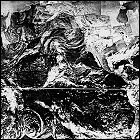 NASA and the United States Weather Bureau launch the ninth experimental TIROS weather satellite, TIROS-9. Heavier than any of the other TIROS experimental satellites, and with cameras mounted on opposite sides of the satellite’s cylindrical body to keep the Earth in view at all times. The result, in February, is the first-ever snapshot of the entire world’s weather patterns within a single day. TIROS-9 also carries other upgrades being considered for an upcoming fleet of full-time operational weather satellites, and remains in service for three and a half years.
NASA and the United States Weather Bureau launch the ninth experimental TIROS weather satellite, TIROS-9. Heavier than any of the other TIROS experimental satellites, and with cameras mounted on opposite sides of the satellite’s cylindrical body to keep the Earth in view at all times. The result, in February, is the first-ever snapshot of the entire world’s weather patterns within a single day. TIROS-9 also carries other upgrades being considered for an upcoming fleet of full-time operational weather satellites, and remains in service for three and a half years.
Project 596
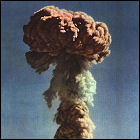 The People’s Republic of China detonates its first nuclear weapon, the 22-kiloton Project 596. Though the Chinese nuclear program did receive an early boost from Soviet researchers, much of the research and production of Chinese nuclear weapons has taken place without outside help since the initiation of the Chinese nuclear weapons development program in 1959. Within three years of this test, China will have developed hydrogen bomb technology.
The People’s Republic of China detonates its first nuclear weapon, the 22-kiloton Project 596. Though the Chinese nuclear program did receive an early boost from Soviet researchers, much of the research and production of Chinese nuclear weapons has taken place without outside help since the initiation of the Chinese nuclear weapons development program in 1959. Within three years of this test, China will have developed hydrogen bomb technology.
Project Orion: lunar and Mars missions studied
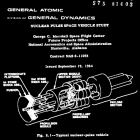 A report prepared by the Future Projects Office of NASA’s Marshall Spaceflight Center and General Atomic, the nuclear power division of General Dynamics, outlines in great detail ways that existing rocket technology (namely the Saturn V, which will not fly until 1967) and theoretical nuclear pulse propulsion technology could be combined to facilitate exploration of the moon and Mars. (Though derived from the Project Orion studies of the late 1950s, the potential nuclear-powered NASA program suggested in this document is not referred to as Orion.) The report, over 174 pages, goes into great detail about crew module design, radiation exposure, ways to mitigate the inevitable ablation of the “pusher plate” at the rear of the vehicle that will absorb a series of nuclear explosions at close range and translate the energy released into forward thrust, and even possible catastrophic launch abort modes, many of which would qualify as at least a small nuclear disaster. Even the health effects on civilian onlookers of a successful launch are considered, from retinal damage caused by viewing high-altitude firings of the nuclear propellant explosions to fallout risks, as well as potential collateral damage to satellites and non-hardened computers resulting from repeated electromagnetic pulses. The mission profiles considered are constrained to lunar missions and missions to Mars. (It’s worth noting that, by the time of this report’s issuance, the Nuclear Test Ban Treaty has been ratified by both the U.S. and the U.S.S.R., making it illegal to put nuclear pulse propulsion into practice.)
A report prepared by the Future Projects Office of NASA’s Marshall Spaceflight Center and General Atomic, the nuclear power division of General Dynamics, outlines in great detail ways that existing rocket technology (namely the Saturn V, which will not fly until 1967) and theoretical nuclear pulse propulsion technology could be combined to facilitate exploration of the moon and Mars. (Though derived from the Project Orion studies of the late 1950s, the potential nuclear-powered NASA program suggested in this document is not referred to as Orion.) The report, over 174 pages, goes into great detail about crew module design, radiation exposure, ways to mitigate the inevitable ablation of the “pusher plate” at the rear of the vehicle that will absorb a series of nuclear explosions at close range and translate the energy released into forward thrust, and even possible catastrophic launch abort modes, many of which would qualify as at least a small nuclear disaster. Even the health effects on civilian onlookers of a successful launch are considered, from retinal damage caused by viewing high-altitude firings of the nuclear propellant explosions to fallout risks, as well as potential collateral damage to satellites and non-hardened computers resulting from repeated electromagnetic pulses. The mission profiles considered are constrained to lunar missions and missions to Mars. (It’s worth noting that, by the time of this report’s issuance, the Nuclear Test Ban Treaty has been ratified by both the U.S. and the U.S.S.R., making it illegal to put nuclear pulse propulsion into practice.)
Nimbus-1
 NASA and the United States Weather Bureau launch the first test article of the next-generation weather satellite, Nimbus-1. Using the more advanced camera technology (including infrared filters to watch cloud motion even on Earth’s night side) tested aboard TIROS-8, Nimbus-1 provides a vast improvement on satellite weather observations over the hardware on the TIROS experimental satellites. The first Nimbus satellite remains in service for only a month; later Nimbus satellites continue to be launched into service well into the late 1970s, and most of them remain operational into the 1980s.
NASA and the United States Weather Bureau launch the first test article of the next-generation weather satellite, Nimbus-1. Using the more advanced camera technology (including infrared filters to watch cloud motion even on Earth’s night side) tested aboard TIROS-8, Nimbus-1 provides a vast improvement on satellite weather observations over the hardware on the TIROS experimental satellites. The first Nimbus satellite remains in service for only a month; later Nimbus satellites continue to be launched into service well into the late 1970s, and most of them remain operational into the 1980s.
Syncom 3
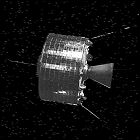 NASA launches the experimental, Hughes Aircraft-built communications satellite Syncom 3 into a geostationary orbit, the first human-made satellite to occupy that orbit. Much like Syncom 2, Syncom 3 is capable of handling two-way telephone calls, as well as teletype and fax transmissions. Placed in an orbit roughly over the International Date Line, Syncom 3 is instrumental in providing live TV coverage of the 1964 Summer Olympics from Tokyo to American television audiences, and the satellite’s technology is considerably upgraded compared to that of Syncom 2 in order to handle television transmission. Control of Syncom 2 is handed over to the Department of Defense in 1965 once NASA has completed its run of experimental communications tests.
NASA launches the experimental, Hughes Aircraft-built communications satellite Syncom 3 into a geostationary orbit, the first human-made satellite to occupy that orbit. Much like Syncom 2, Syncom 3 is capable of handling two-way telephone calls, as well as teletype and fax transmissions. Placed in an orbit roughly over the International Date Line, Syncom 3 is instrumental in providing live TV coverage of the 1964 Summer Olympics from Tokyo to American television audiences, and the satellite’s technology is considerably upgraded compared to that of Syncom 2 in order to handle television transmission. Control of Syncom 2 is handed over to the Department of Defense in 1965 once NASA has completed its run of experimental communications tests.
Echoes of the Big Bang
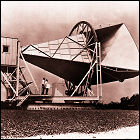 Using a 20-foot, horn-shaped receiver built at Bell Laboratories’ Holmdell, New Jersey facility for tests of the Echo-1 satellite in 1960, radio astronomers Arno Penzias and Robert Wilson stumble across the first sign of the Cosmic Microwave Background: a microwave signal indicating a 2.7 Kelvin background radiation emanating from every point in the universe, which Wilson and Penzias believe may be leftover radiation from the birth of the universe (confirming the “Big Bang theory” that had come about when astronomer Edwin Hubble discovered in the 1920s that the Doppler effect indicated that galaxies were moving away from each other). Though this monumental discovery will net the two a Nobel Prize for physics in 1978, Penzias and Wilson initially believe that the radiation is man-made or perhaps the result of pigeon droppings in the antenna interfering with their instruments!
Using a 20-foot, horn-shaped receiver built at Bell Laboratories’ Holmdell, New Jersey facility for tests of the Echo-1 satellite in 1960, radio astronomers Arno Penzias and Robert Wilson stumble across the first sign of the Cosmic Microwave Background: a microwave signal indicating a 2.7 Kelvin background radiation emanating from every point in the universe, which Wilson and Penzias believe may be leftover radiation from the birth of the universe (confirming the “Big Bang theory” that had come about when astronomer Edwin Hubble discovered in the 1920s that the Doppler effect indicated that galaxies were moving away from each other). Though this monumental discovery will net the two a Nobel Prize for physics in 1978, Penzias and Wilson initially believe that the radiation is man-made or perhaps the result of pigeon droppings in the antenna interfering with their instruments!
Mercury’s shorter, but still very long, days
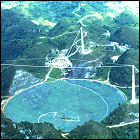 Using the Arecibo Radio Telescope in Puerto Rico, a team of radio astronomers led by Gordon Pettengill makes the determination that Mercury rotates on its axis once every 59 Earth days, a much shorter “day” for Mercury than the previously estimated 88 Earth day rotation. Pettengill is a pioneer of radio and radar astronomy, and will go on to use both methods to study asteroids, Venus, and Earth’s moon.
Using the Arecibo Radio Telescope in Puerto Rico, a team of radio astronomers led by Gordon Pettengill makes the determination that Mercury rotates on its axis once every 59 Earth days, a much shorter “day” for Mercury than the previously estimated 88 Earth day rotation. Pettengill is a pioneer of radio and radar astronomy, and will go on to use both methods to study asteroids, Venus, and Earth’s moon.
The fire fountains of Surtsey
 Now nearly five months old, the volcanic island of Surtsey, still erupting and building up from the seafloor off the southern coast of Iceland, transitions to a new phase of its eruption. The explosive eruptions, caused by hot magma coming into direct contact with seawater, subside as the volcanic vents are now permanently above sea level. Almost a mile in diameter, Surtsey’s eruptions transition to lava fountains and lava flows, which harden as they are cooled by the coastal water. This harder material helps to protect Surtsey from being eroded away, and eruptions will continue to add more land area to Surtsey through 1965. Surtsey is almost ready for brief visits from human researchers, who will find life taking root on the island much sooner than expected.
Now nearly five months old, the volcanic island of Surtsey, still erupting and building up from the seafloor off the southern coast of Iceland, transitions to a new phase of its eruption. The explosive eruptions, caused by hot magma coming into direct contact with seawater, subside as the volcanic vents are now permanently above sea level. Almost a mile in diameter, Surtsey’s eruptions transition to lava fountains and lava flows, which harden as they are cooled by the coastal water. This harder material helps to protect Surtsey from being eroded away, and eruptions will continue to add more land area to Surtsey through 1965. Surtsey is almost ready for brief visits from human researchers, who will find life taking root on the island much sooner than expected.
The National Severe Storms Laboratory
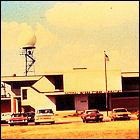 To further research into the formation and evolution of severe weather in the midwestern United States, the U.S. Weather Bureau establishes the National Severe Storms Laboratory in Norman, Oklahoma. Operating in close cooperation with the University of Oklahoma’s meteorology department and the Severe Local Storms Warning Service in Kansas City, the NSSL focuses on improving prediction and detection of destructive weather, including tornadoes, quickly fixating upon the potential of Doppler radar.
To further research into the formation and evolution of severe weather in the midwestern United States, the U.S. Weather Bureau establishes the National Severe Storms Laboratory in Norman, Oklahoma. Operating in close cooperation with the University of Oklahoma’s meteorology department and the Severe Local Storms Warning Service in Kansas City, the NSSL focuses on improving prediction and detection of destructive weather, including tornadoes, quickly fixating upon the potential of Doppler radar.
TIROS-8
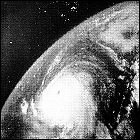 NASA and the United States Weather Bureau launch the eighth experimental TIROS weather satellite, TIROS-8. With TIROS-7 still fully operational, TIROS-8 expands coverage of Earth’s weather (including early detection and tracking of Hurricane Betsy, the first hurricane in American history to cause over $1,000,000,000 in damage) and tests new technology, including a high resolution, slow-scan imaging system. TIROS-8 is the second longest-lived of the early experimental TIROS satellites, remaining in service for three and a half years.
NASA and the United States Weather Bureau launch the eighth experimental TIROS weather satellite, TIROS-8. With TIROS-7 still fully operational, TIROS-8 expands coverage of Earth’s weather (including early detection and tracking of Hurricane Betsy, the first hurricane in American history to cause over $1,000,000,000 in damage) and tests new technology, including a high resolution, slow-scan imaging system. TIROS-8 is the second longest-lived of the early experimental TIROS satellites, remaining in service for three and a half years.